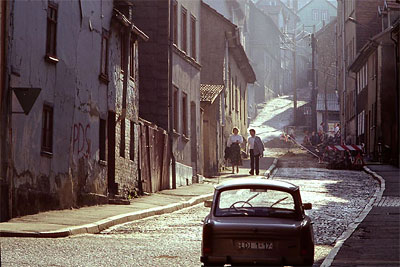| photography
East Germany, Up Close and Personal
When a West German photographer set off on a trip to the East German island of Rügen just after the Wall fell in the spring of 1990, he captured a world that would soon disappear forever. Twenty years after the epochal event, he looks back on his journey in a first-person account.
"I remembered the painting from art class in school: The Chalk Cliffs on Rügen, by Caspar David Friedrich. It seemed legendary to me. On the one hand, I was fascinated by the colors, the pinks, the grays, the greens, and the shimmering blue of the water contrasting with the luminous white chalkstone. On the other hand, I was convinced that although I could always see the painting, I would never be able to contemplate the same scenery in reality. I wondered whether the landscape on the island of Rügen truly resembled the painting. It was a mystery to me.
"And then the Berlin Wall came down. It was the spring of 1990, and I was 36 and living in the West Germany city of Essen. I was visiting a friend in Berlin when it all happened, and I decided to take advantage of the opportunity. It must have been May when I traveled to Rügen. I had grown up in the Ruhr region and all I knew about the other half of Germany -- other than Friedrich's painting of the chalk cliffs -- were the images of East Germany I had seen on television. One was of the Palace of the Republic, an image that led me to conclude that the German mentality over there was no different than it was where I lived. In other words, everything was very orderly and tidy. Other than that, I had seen a small slice of East Germany several times while traveling on the transit route between the Marienborn border crossing and West Berlin. I wasn't exactly tempted to see more.
"There was only one occasion when I experienced a small fragment of the real East Germany. In 1985, I accompanied the singer Klaus Lage, as his photographer, on a tour through the East, but everything was set up so that there was little time to look around. It would be different the second time. Although my destination was Rügen and its chalk cliffs, the rest of my journey was more or less haphazard. I wanted to allow myself to drift around, to decide spontaneously whether to take a left or a right from the road I was driving on, to take pictures of whatever appealed to me and to spend the night wherever I happened to end up. How would people react, I wondered?"

more |

